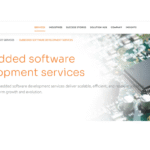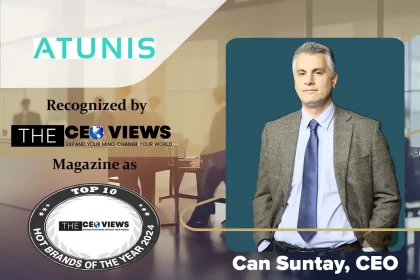In business, hesitation can cost millions. Leaders are often expected to act decisively, yet many find themselves stuck in analysis loops or reliant on incomplete information.
The stakes are high: competitors pivot quickly, customers change preferences overnight, and unexpected shocks rewrite playbooks in minutes. Making the right call under such pressure requires more than instinct. It calls for systems that surface accurate insights without delay.
The challenge is that traditional tools and workflows weren’t built for the speed and complexity leaders face today. Without smarter approaches, decision-making risks becoming reactive instead of strategic.
The Hidden Cost of Delayed Judgments
Leaders hesitate not because they lack skill, but because the data they lean on often lags behind reality. Reports generated on a weekly or monthly basis capture the past, not the present. By the time decisions are made, opportunities have shifted.
This disconnect drains momentum and erodes confidence, creating a cycle where hesitation becomes a habitual response. Over-reliance on outdated tools illustrates why spreadsheets should be temporary, not permanent.
Static files create bottlenecks, foster errors, and limit collaboration when it’s needed most. Imagine a leadership team trying to forecast demand while five different versions of a spreadsheet circulate in email threads.
Instead of clarity, they face confusion. In contrast, modern decision platforms ensure that everyone works from the same real-time truth, transforming hesitation into forward motion.
Cognitive Overload in High-Stakes Moments
Another barrier is the mental burden of balancing multiple risks simultaneously. A CEO in the midst of a product crisis, for example, may simultaneously juggle supply chain disruptions, customer trust, and investor expectations.
The flood of information can overwhelm even seasoned leaders, leaving them staring at dashboards that look more like noise than guidance. Without streamlined platforms to filter signals from static, they risk paralysis or rushed calls based on incomplete perspectives.
Smart technology addresses this by flagging anomalies, ranking the urgency of tasks, and simplifying how leaders absorb complex inputs. It’s not just about cutting through noise; it’s about presenting the right data in a way the human brain can act on quickly.
With the right tools, decision-makers can shift from firefighting to strategic problem-solving, even under extreme pressure.
How Bias Creeps Into Split-Second Choices
Even confident executives are vulnerable to unconscious bias when pressed for time. Familiar heuristics, such as leaning on the last successful tactic, often override objective assessment.
This can backfire when circumstances shift subtly but significantly, like a marketing strategy that thrives in one quarter but fails in another due to unseen competitor moves. Decision support systems that integrate real-time analytics counteract this bias by highlighting patterns humans might miss.
For instance, predictive analytics can reveal that a dip in customer engagement isn’t seasonal but tied to a specific competitor campaign. Similar innovations in fintech are shaping how leaders practice making decisions in uncertain times, offering a blueprint for other industries.
By surfacing insights that challenge assumptions, these systems prevent blind spots from derailing critical decisions.
Why Speed Alone Isn’t Enough
It’s tempting to equate fast decisions with effective leadership. Yet speed without precision can be disastrous. A retailer, for instance, that rushes to restock based on outdated consumer data may misallocate capital and alienate loyal buyers.
Another example: an airline that rapidly shifts flight schedules without factoring in weather models may create logistical nightmares instead of solving them. Smarter platforms go beyond velocity, layering predictive models that anticipate likely scenarios.
They allow leaders to simulate outcomes quickly and adjust strategy before committing resources. Effective leadership depends on blending data and intuition to guide choices, since metrics alone rarely capture the full picture.
Ultimately, the leaders who combine accuracy with swiftness gain a durable edge that rivals cannot easily match.
Culture as the Quiet Enabler
Technology alone cannot transform decision-making if an organization’s culture resists change. Teams conditioned to defer upward or avoid accountability often stall progress. Leaders who encourage distributed decision rights, backed by transparent systems, create resilience.
Picture a sales team empowered to make pricing calls on the spot because they trust the real-time data at their fingertips. That freedom prevents bottlenecks and speeds up responsiveness to clients.
When employees at every level can access trustworthy insights, decisions no longer clog at the top. This shift not only improves outcomes but also strengthens morale, as staff see their judgment valued and validated.
Cultures that embrace this shared responsibility move faster, but they also build loyalty and reduce turnover, amplifying the long-term payoff.
Building A Smarter Playbook for Tomorrow
Future-ready leaders are investing in decision ecosystems that learn and adapt. AI-powered dashboards, collaborative cloud platforms, and predictive engines are becoming standard, not optional.
These tools provide early warning signals – flagging inventory issues before they snowball or alerting leadership to market shifts before competitors notice.
The goal is not to replace human judgment but to augment it, ensuring choices are both swift and sound. A leadership team equipped with these systems can run scenario simulations in hours rather than weeks, freeing them to test ideas without fear of blind spots.
As adoption grows, the gap between digitally enabled leaders and those clinging to old tools will only widen, reshaping entire industries in the process.









